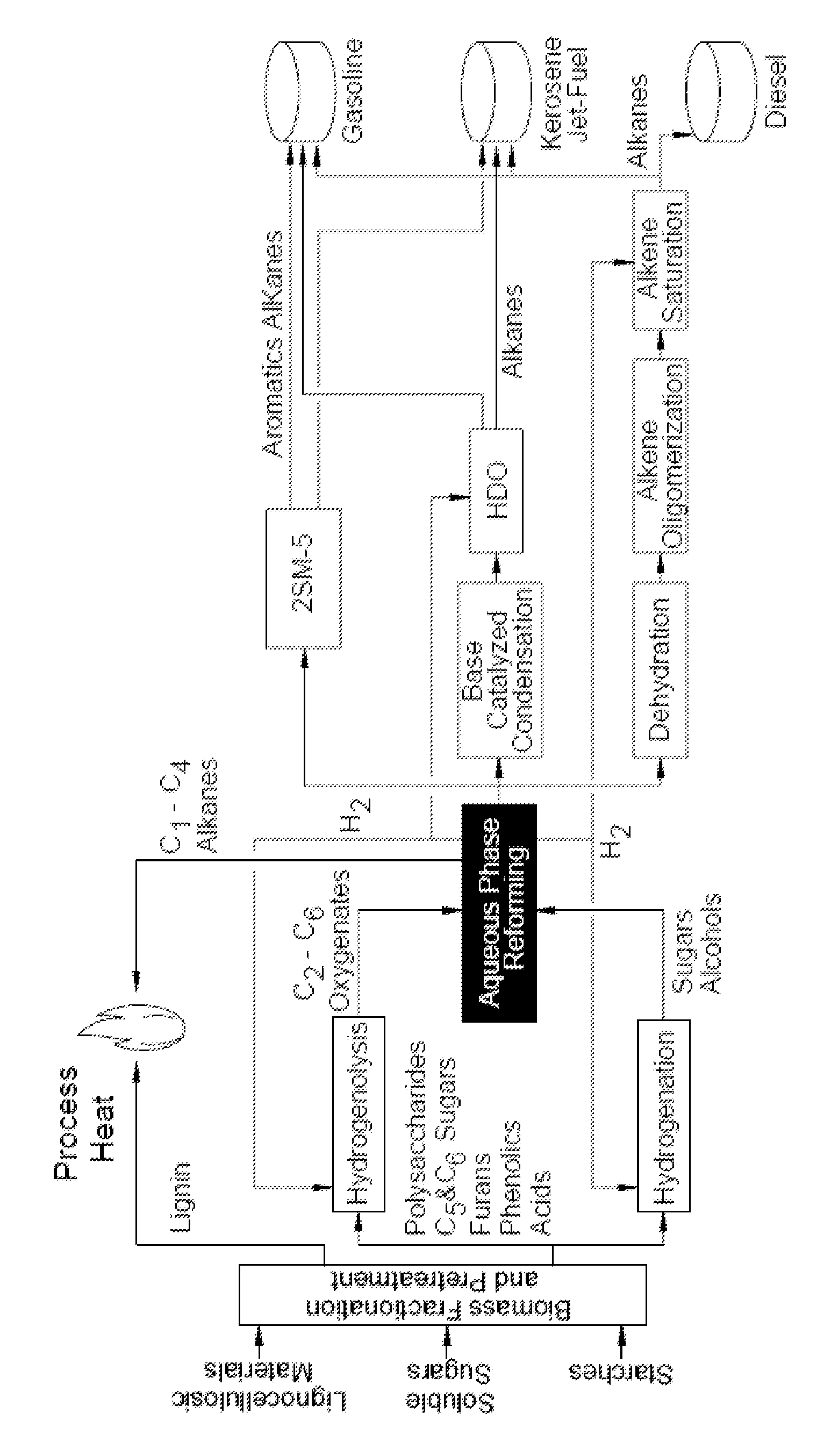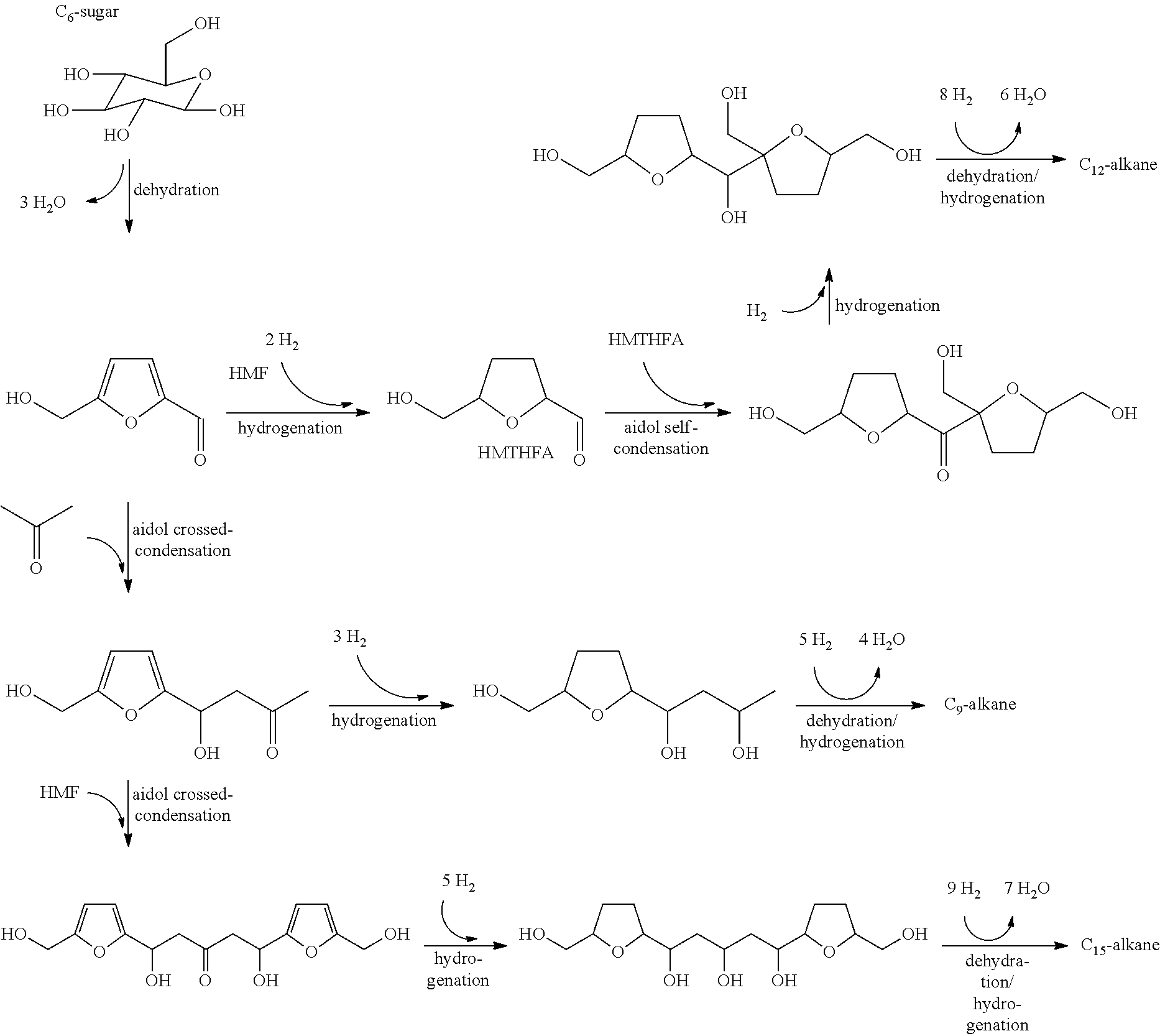Production of liquid fuels (sylvan-liquid-fuels) from 2-methylfuran
a technology of methylfuran and sylvan-liquid fuel, which is applied in the preparation of oxygen-containing compounds, fuels, organic chemistry, etc., can solve the problems of ducts and filters, not completely soluble, and significant increases in the price of some basic foodstuffs
- Summary
- Abstract
- Description
- Claims
- Application Information
AI Technical Summary
Benefits of technology
Problems solved by technology
Method used
Image
Examples
example 1
Preparation of a Chemoselective Hydrogenation Catalyst A
[0058]A pore volume of 2.98 g of a USY zeolite (particle size 0.425-0.850 mm) with a Si / Al ratio of 20 is impregnated with 4 ml of an aqueous solution of 139 mg of La(NO3)3.6H2O and 722 mg of Cu(NO3)2.3H2O. This material is dried in an oven overnight at 60° C.
example 2
Preparation of a Chemoselective Hydrogenation Catalyst B
[0059]A pore volume of 3.00 g of a Beta zeolite (particle size 0.425-0.850 mm) with a Si / Al ratio of 13 is impregnated with 4 ml of an aqueous solution of 139 mg of La(NO3)3.6H2O and 719 mg of Cu(NO3)2.3H2O. This material is dried in an oven overnight at 60° C.
example 3
Preparation of a Hydrogenation / Dehydration Catalyst C
[0060]Norit activated carbon particles from 0.425 to 0.850 mm are impregnated with a solution of platinum hexachloride acid hexahydrate in deionised water at pore volume to obtain a catalyst with a platinum concentration of three percent by weight. The material is dried at 60° C. for 72 hrs in an oven.
PUM
| Property | Measurement | Unit |
|---|---|---|
| temperature | aaaaa | aaaaa |
| temperature | aaaaa | aaaaa |
| temperature | aaaaa | aaaaa |
Abstract
Description
Claims
Application Information
 Login to View More
Login to View More - R&D
- Intellectual Property
- Life Sciences
- Materials
- Tech Scout
- Unparalleled Data Quality
- Higher Quality Content
- 60% Fewer Hallucinations
Browse by: Latest US Patents, China's latest patents, Technical Efficacy Thesaurus, Application Domain, Technology Topic, Popular Technical Reports.
© 2025 PatSnap. All rights reserved.Legal|Privacy policy|Modern Slavery Act Transparency Statement|Sitemap|About US| Contact US: help@patsnap.com



